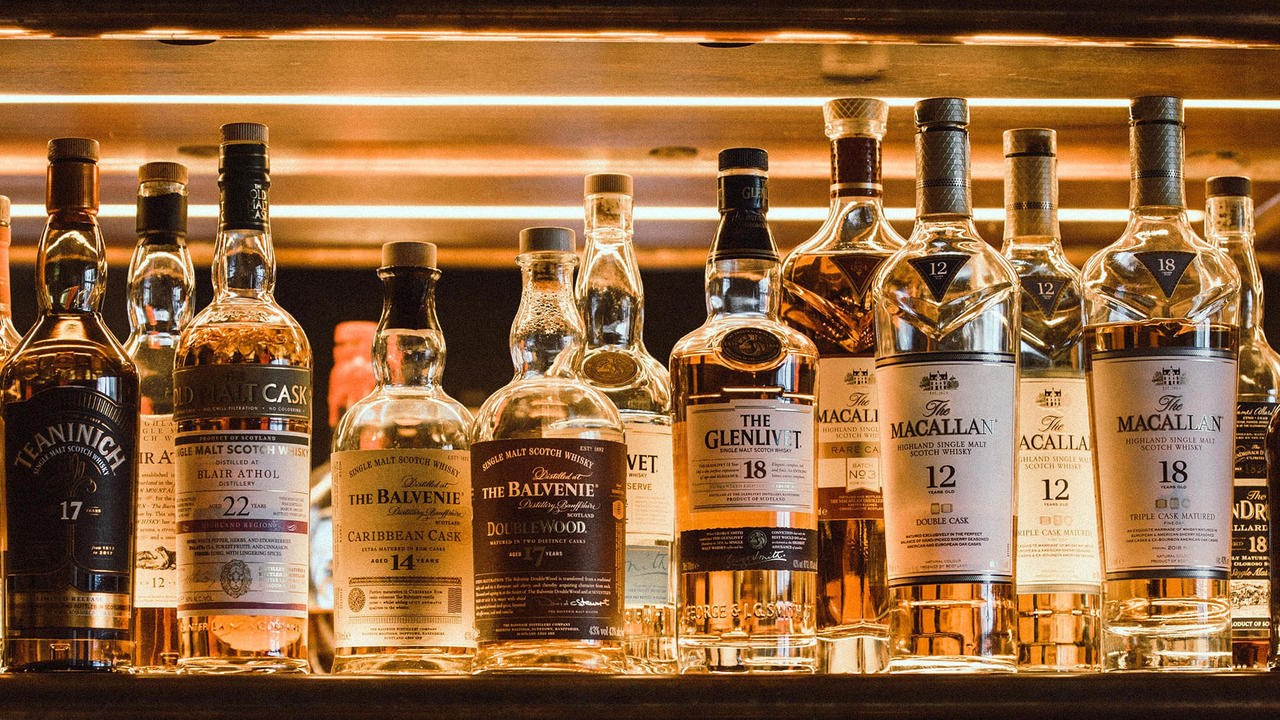Global whiskey sales have proved its strong popularity throughout the world. There are many different reasons why whiskey boasts such a large number of enthusiasts. Whiskey’s broad flavour spectrum is an obvious one. Its heritage, the stories and myths, the beautiful distilleries, the way it’s crafted, and the people behind the brands all contribute to its appeal. Personally, I enjoy all the above, and working in the industry has revealed to me other lesser known charms of the world of whiskey. For example, the next time you visit a distillery, ask to see underneath the stillhouse floor. Distilleries are fascinating feats of engineering and whilst looking beneath a distillery floor can be a bit like peeking underneath your floorboards, there is something mesmerising about understanding how all the plumbing, cleaning, safety equipment, etc., work on an industrial scale.
Another interest of mine is the marketing side of whiskey. Conversely, this is a topic many whiskey enthusiasts dislike. As a matter of fact, brands sometimes promote themselves as being “marketing-free”, which often brings a smile to my face. Positioning a product as “marketing-free” for consumers who don’t like excessive advertising is indeed a marketing strategy. Communicating that strategy using, for example, sample-like packaging is marketing 101. Whether we like it or not, marketing is all around us, including in the world of whiskey.
Effective marketing drives sales, and it’s the perfect moment to study the most recent figures as the International Wine and Spirit Research (IWSR) company has just released its Global Trends Report analysis for the previous calendar year.
Due to the research methodology, the numbers always need to be taken with a small pinch of salt. They don’t always match the sales results announced by the producers. However, they are widely used by drinks execs and investors, especially when seeking out trends. On a personal level, I enjoy analysing the results to see whether what I am seeing and hearing on the ground matches IWSR’s reports. This year is especially interesting as the numbers should reflect the impact of the pandemic (up until December 2020).
If you’re a bartender or bar owner, IWSR can be a useful tool to help you stock your bar adequately. Of course, patrons are likely to tell you what they want you to offer, but it is always useful to know which are the current best-selling brands. Baijiu is the biggest spirit category in the world, by the way. And, as this example highlights, it is worth checking the numbers at a local level or based on your clientele as results vary greatly depending on location. There isn't a huge demand for baijiu where I live in Speyside!
In the following paragraphs, I will share some global highlights and primarily focus on sales volume (as opposed to sales value). Volume numbers are likely to be a better representation of what you can see on shelves around the world. All the volume figures are in thousands of 9-litre cases.

Spirit sales worldwide by volume
So let’s start with how whiskey compares with other categories. As you can see on the table below, it sits comfortably in second position – a long way away from baijiu, but it’s worth pointing out that baijiu is primarily consumed in China. I know anybody can be the leader of a small-enough subgroup but, arguably, whiskey is indeed the biggest international spirit!
IWSR is also excellent for identifying trends. The Compound Annual Growth Rate (CAGR) column shows the average change per year over the last 5 years. In other words, it indicates long-term trends, smoothing over short-term changes that may be due to temporary events such as a pandemic or taxation. The Irish whiskey numbers in Table 2 perfectly illustrate that point. The category is clearly growing, despite last year’s bump.
Table 1 clearly shows a premiumisation trend across spirits with almost all categories declining in volume but growing in value. People drink less spirits but spend more money on their favourite brands. Crudely, this could be translated as people drinking less but better - although one could argue price does not always reflect quality.
It’s also worth bearing in mind that growth rates can flatter smaller categories - a brand which sold 1 case in 2019 and 2 in 2020 would show a growth rate of 100% but one couldn’t really argue that the brand is at its peak.... Therefore, Baijiu’s value growth is particularly impressive.
Read our comprehensive guide on how to taste whiskey.

World whiskey sales volume
Looking at the whole world whisky category shows that Indian whisky is the biggest of all. Here, it’s important to note IWSR includes all Indian whisky brands, including those made from molasses. Some might argue that they should not belong to this category as all other whiskies are made from cereals.
American whiskey is in impressive health considering the size of the category. It's good to see Japanese whisky also showing some strength, given its recent arrival on the scene. World whisky sales are showing some great strength, all together.

Scotch whisky sales volume
Within Scotch whisky, IWSR adopt a slightly awkward categorisation as they do not use the legal terminology. You need to know that single malt and blended malt whisky comes under 'malt whisky' and blended grain whisky is recorded under 'grain whisky'.
Scotch whisky is clearly continuing to premiumise, with a general decline in often cheaper blends and a sharp value growth in single malt whisky.

Best selling Scotch whisky brands
Next, it’s always interesting to identify the best sellers. Let’s start with the blended Scotch whiskies, which, as you saw in Table 3, is the biggest Scotch whisky category. Here, I am going to be slightly diplomatic and not share the percentages of growth and decline. I have a lot of friends in this industry and I wouldn’t want to highlight who are the winners and losers. It would make for a pretty tense conversation next time I head to the pub! However, if you really want to know, IWSR has all the numbers available.
Moreover, I can’t stress enough the difference between volume and value. I remember reading once that “volume is vanity, profit is sanity”. In other words, what is the point of being the biggest if the brand is not sustainable (both financially and environmentally)? Having said that, the volume numbers should reflect how visible each brand is on shelves around the world.
Find out more Scotch whisky with our 'what is Scotch' page.
Intrigued by peated whisky? Read more about this curious flavour and how its made.

Moving on to malts, and one last example to stress how these numbers need to be taken with a pinch of salt. According to IWSR’s numbers, the best-selling Single Malt is 8.7% the size of the best-selling blended Scotch whisky. However, when looking at generated value, Glenfiddich is 16.5% the size of Johnnie Walker. Single malt whiskies are indeed much smaller than blends but generally command a much higher retail price.

I hope that you’ve enjoyed this look at the commercial side of whiskey and that you all have an excellent summer.
I plan to return in late August for a blog on 'what is whisky made from?'. The barley harvest should be in full swing by then, weather permitting.
Slainte Mhath!
Check out our 'what is whiskey' page to know everything about whiskey.
Feel inspired to bartend? Take a look at some of our EBS Bartender Courses.

